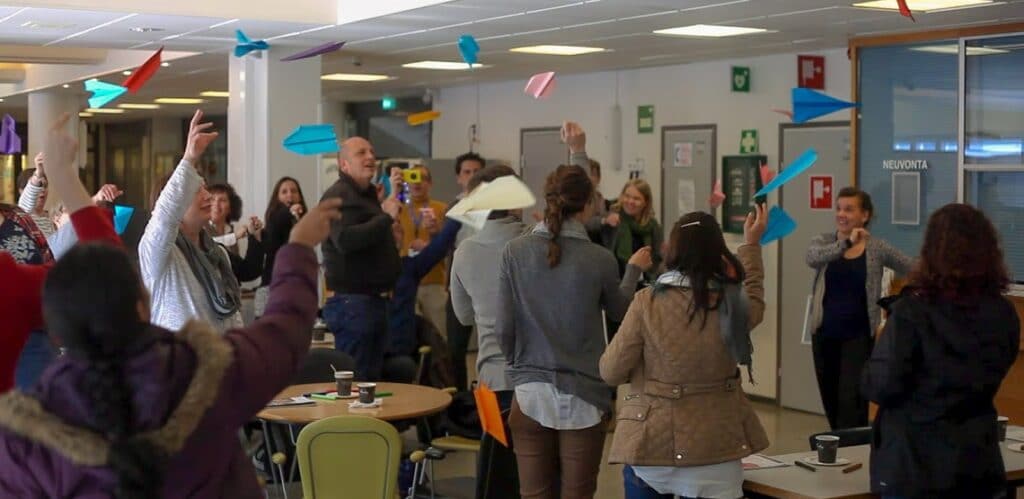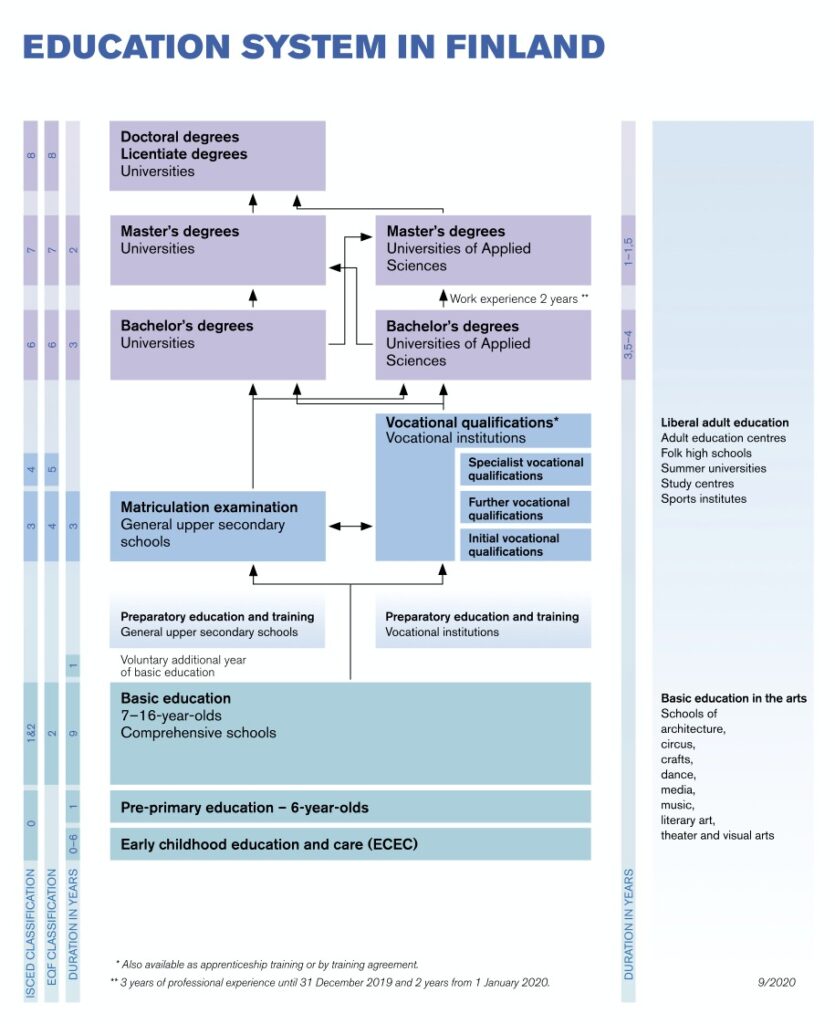Facts About Finnish Education
Finnish education is famous for its excellent learning outcomes and child-centered, stress-free approach. But what else do you know about the Education in Finland? We gathered some Facts about Finnish Education. Did you know all this 😊?

- Every child in Finland has a subjective right to attend early childhood education and care if the family so wishes.
- Pre-primary education is compulsory for children at the age of six.
- Children start the school at the age of 7. Basic education in Finland lasts altogether nine years, between 7 and 16 years. Basic education is provided within a single structure: there is no division into primary and lower secondary education.
- Instruction in basic education is usually given by the same class teacher in most subjects in the first six year-classes and by different subject specialists in the last three years in basic education.
- In Finland, the educators within early childhood education and care generally have Bachelor’s degrees. Pre-primary teachers and teachers in basic and general upper secondary education are required to hold a Master’s degree. Get to know an ordinary day at a Finnish Daycare!
- All basic education schools in Finland follow the respective national core curriculum. Learn more.
- There are no national tests for pupils in basic education in Finland. Interested in assessment?
- After basic education, students continue to secondary education, usually to general upper secondary school or vocational upper secondary education and training. 21st century skills are vital for the future.
- General upper secondary education ends with a national matriculation examination, which is the first and only national examination of the Finnish education system.
- Education in Finland is free of charge at all levels, all the way from pre-primary education to higher education.
- Most institutions providing basic and upper secondary level education are maintained by local authorities or joint municipal consortia.
- All schools in Finland are publicly funded; there are no tuition fees.
- There are no gender-based schools in Finland: all schools have both boys and girls as students.
- In Finland, special needs education is primarily provided in mainstream education, not in separate special education schools.
- The Finnish education system has no dead-ends. Learners can always continue their studies on an upper level education, no matter what choices they make in between.
- Higher education is offered by universities and universities of applied sciences. Universities emphasize scientific research and instruction, whereas universities of applied sciences have adopted a more practical approach.
- Adult education is very popular in Finland – the participation rate is high also in international terms.
We hope you learned something new when reading the Facts about Finnish Education!

Reference: Finnish Education in a Nutshell 2017. Finland’s Ministry of Education and Culture and Finnish National Agency for Education.
